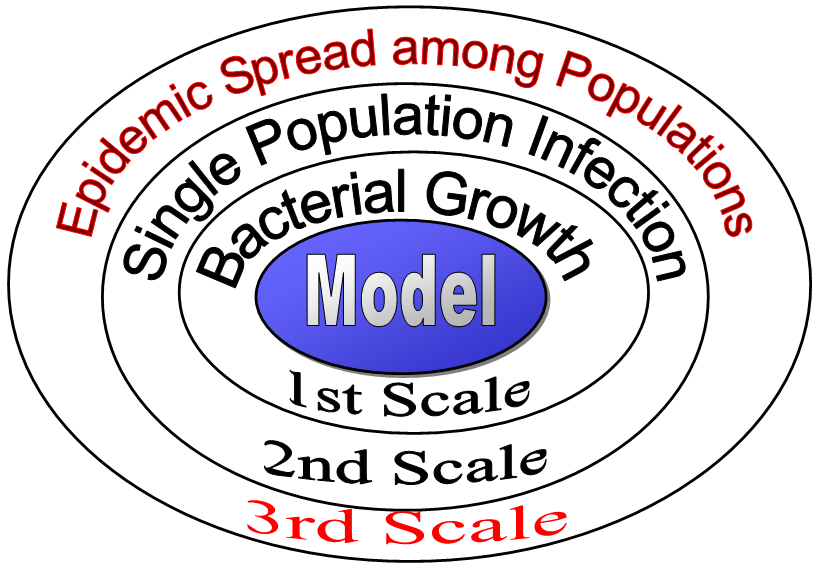Virginia Tech/model
From 2007.igem.org
|
|
Our approach to modeling is different than other approaches in epidemiology.Our project is distinguished by our use of a living model system, E. coli and λ phage. Using a biological model like this allows us to account for random fluctuatations in the system. The infection and growth of E. coli are stochastic processes, just like interactions between hosts and pathogens in other epidemics. After gathering experimental data for these events, we matched them with a computer simulation.
We started out with reaction equations that described the infection of one population of E. coli and hoped to use a hybrid simulator to make our computer model. The hybrid simulator allows us to simulate with both differential equations and stochastic processes. Differential equations have been used extensively in epidemiological modeling. They can be computed quickly, but they don't account for random variations in a system. By contrast, stochastic modeling allows us to account for randomness, but takes a lot of computing power. The hybrid simulator mixes these two approaches. Highly random events in the model are simulated stochastically, while less random events are modeled differentially to save computing time. A Multi-scale Model When we started matching the single population infection, we realized that we needed to match uninfected bacterial growth before we introduced phage. Thus, we collected experimental data for bacterial growth and started matching it. After we successfully matched bacterial growth, we worked on matching infection in a single population. We had also envisioned matching the spread of the infection across a 96-well plate. This level of modeling would allow us to add air-traffic data to our model.
Read more about modeling...Beginning to Model: The 3 Scales of the Model:
Contributing Back: Publishing our Approach
|







